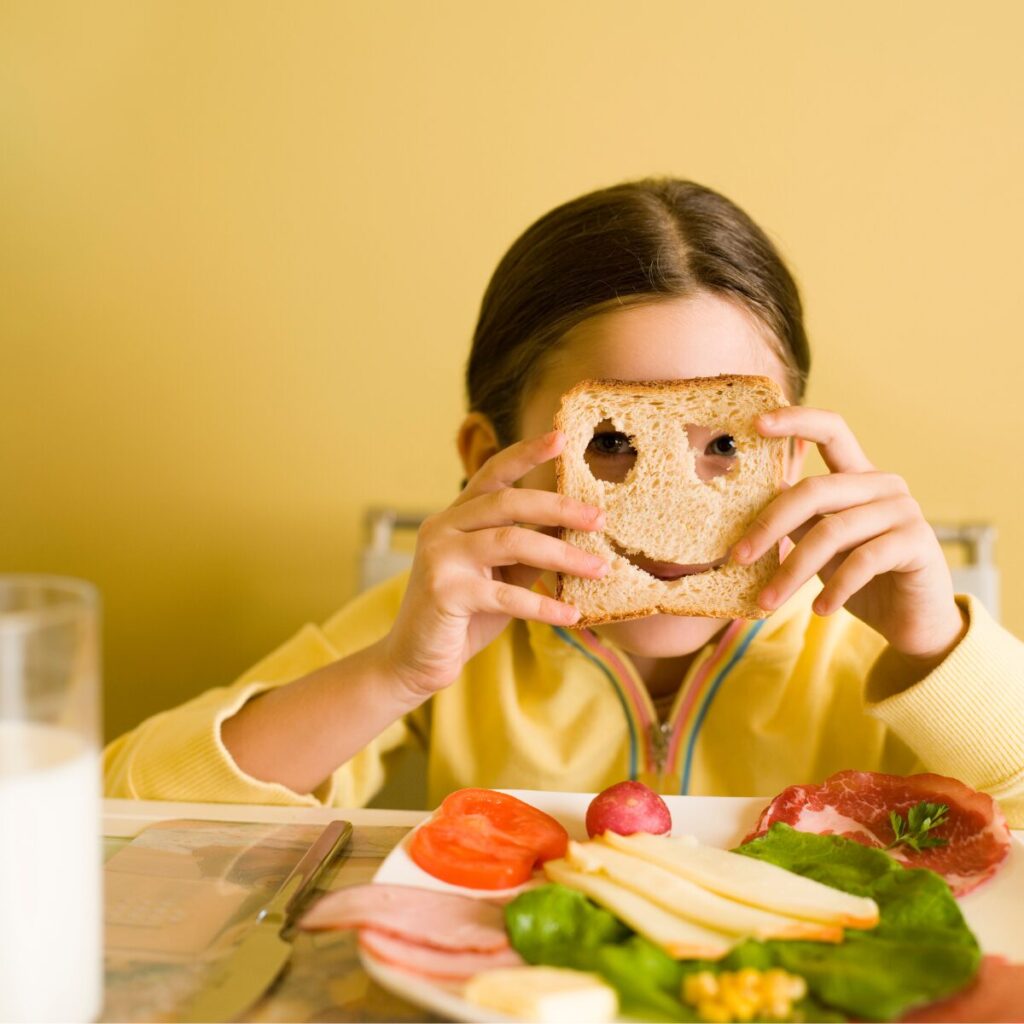If your child turns their nose up at anything unfamiliar on their plate, you’re not alone and you’re not doing anything wrong. The good news? Kids don’t need to taste a food to get familiar with it. Exposure is about much more than just eating. It’s about engaging with food through all the senses.
From exploring textures with their hands to smelling, talking about, and even playing with food, there are countless low pressure ways to build comfort and curiosity around new foods. In this blog, we’ll show you how to make food exposure fun, stress free, and effective.
What is food exposure?
Food exposure is multi sensory engagement with food through all the senses. So it includes sight, smell, touch and even talking about food. It doesn’t just have to be just taste.

Some examples of practical and achievable exposures can be
- Watching or handling foods while preparing or cooking
- Watching others eat
- Reading food-themed books
- Helping with the grocery shopping
- Food based role play such as cooking a pretend kitchen
Some more examples of how to carry out food exposure are listed further down.
Why is food exposure so important
Builds familiarity over time and each exposure, so it starts to reduce the anxiety around new foods.
Helps children develop positive associations with foods without the pressure to eat them. As long as they are reminded they don’t have to eat the foods unless they want to.
Supports long-term acceptance and curiosity about food. So once foods are accepted in their diets it becomes easier to keep offering those foods without being rejected.
Encourages a more varied diet. Offering variety and textures is really important at a young age. There are lots of ways to do this. Find here 10 easy ways to add variety to your child’s diet.
How to expose kids to new foods (without the pressure)

- Involve kids in meal preparation such as washing vegetables, chopping, stirring etc
- Involve them in grocery shopping such as picking out a vegetable or placing it on the counter.
- Offer tiny tastes which could be as small a pea sized amount of something.
- Encourage them to smell foods – asking what does it smell like?
- Use fun and play such as food art, pretend play, or food themed storybooks.
- Eat together: role modeling is really important to help try new foods and be exposed to different foods.
- Create routines around trying new foods (e.g., “Food Exploration Friday”)
- Talk about the food’s shape, colour, texture, and temperature For example “This carrot is crunchy!”
- Try foods exposed in different forms of cooking such as raw, roasted and mashed.
- Use different recipes to expose foods e.g carrots in a soup, carrots in fritters and carrot mash.
Common myths about exposure
“They have to eat it for it to count as an exposure”
Exposure to foods occurs through our many senses and that includes eating. It can take a number of steps before a child is comfortable eating a new food. It is important to remember it can vary from child to child depending on their sensory system. Celebrating small steps towards eating and exposure in lots of ways takes time, consistency and effort.
“If they don’t like it the first time, they never will”
There is a misconception that if a child dislikes something the first time they never will. It may be true for some foods, as we tend not to like every food on offer but typically it takes at least 10 exposures or more to accept a food.

“Food is for eating not playing with”
We are often taught not to mess with food, play with it because we feel it should be there to be eaten. Parents often don’t like the mess either but the truth is young children need to play and get messy with food and engage with it through their senses, so they can learn what it feels like, smells like etc but they feel able to accept it.
Realistic expectations for parents
If you can learn to be realistic in terms of what exposure looks like to get your child to try and enjoy new foods. Then it will really help to manage your anxiety and be more confident in feeding your child. Here are some realistic expectations to help you on your child’s feeding journey:
It really takes (sometimes 10+) repeated exposures
A research study of 4 – 24 month olds showed that tasting single or multiple fruits or vegetables (1 food per day for 8 – 10 or more days is likely to increase the acceptability of the exposed food).
Celebrate small wins
A small win using one of their senses such as smelling a food is progress, even though it may feel like it’s taking forever. They are moving in the right direction. Stay consistent and patient as every little exposure counts.
Conclusion
Repeated exposure to new foods is a slow process but creates a foundation for long term healthy eating and acceptance of new foods. If you can shift your mindset from pressure to play and patience, going at your child’s pace, you are going to give them a varied and nutritious diet.